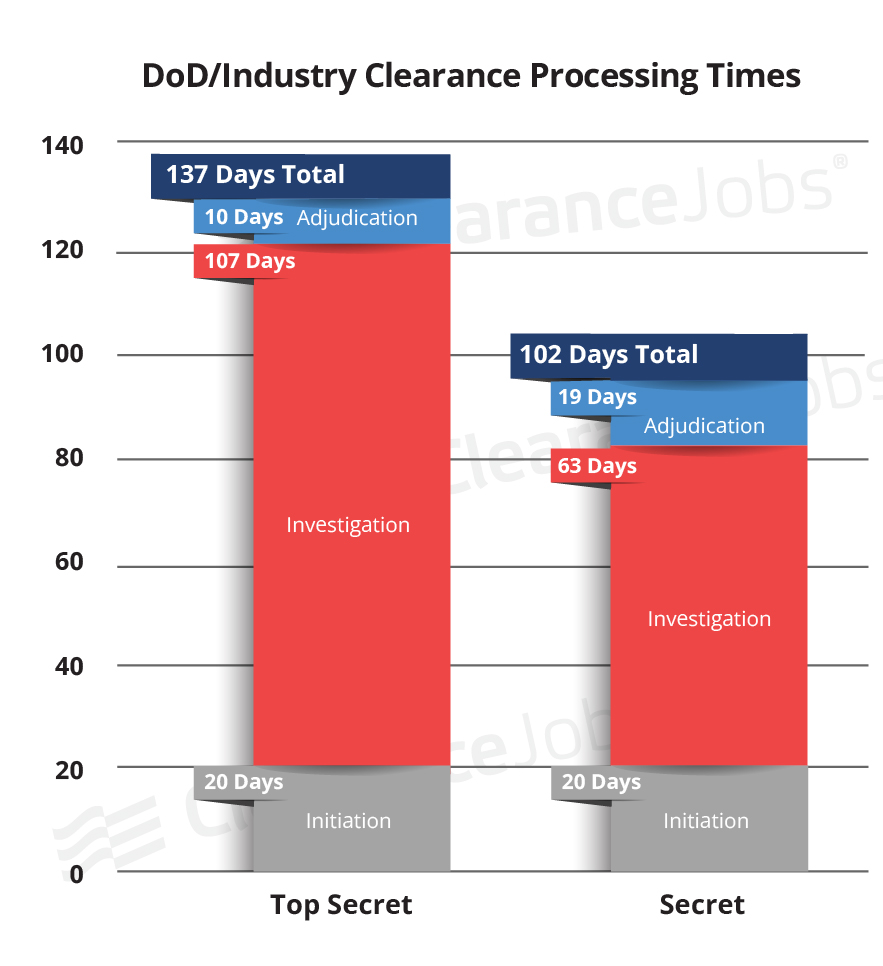Security clearance processing times are on a steady uptick, a trend that has continued through 2023, as the government also faces a slight increase in pending security clearance background investigations. Current security clearance processing times for DoD/Industry are 137 days for a Top Secret security clearance and 102 days for a Secret security clearance. These averages are for the fastest 90% of applicants.

Source: DCSA
Security clearance processing times are still far below the 500+ day timelines we saw several years ago, but still slightly outside of current benchmarks, and well below the moonshot goals recently announced by the Office of Management and Budget at the recent U.S. Senate Select Committee on Intelligence (SSCI). What could be holding back security clearance processing times from further improvements? Government officials emphasize the path to cutting security clearance processing times in half is one that will take time, and won’t happen overnight.
“Significant actions will be required to achieve various targets, and they will be dependent on capabilities that
are not yet in place. As capabilities are put in place and the TW 2.0 model is refined, the aspirational targets will be refined. The new targets, notionally to begin in FY2028, represent a significant improvement in the speed of delivering talent to the mission.” – Personnel Vetting Quarterly Progress Update, FY 23 Q2
Factors influence clearance processing times today can include the transition to the National Background Investigation Services (NBIS), the move to eApp, and the usual cyclical changes and challenges with the background investigation case load. And the other factor at play will be the response and reaction to the ongoing news story about Airman Teixeira and his security clearance background investigation. Much as the Navy Yard Shooting led to questions around how Aaron Alexis was able to obtain a security clearance and his eligibility to access classified information – many are asking how Teixeira was able to obtain a security clearance given concerns that have bubbled to the surface during court proceedings.
Alexis led to several reforms in the security clearance process, including the government’s push for an insider threat program to help identify and address risks sooner. Cyber vetting remains an unknown factor in the security clearance process, with many questions as to how social media and online associations could play a role in the background investigations process. Any changes, or adjustments will play out over time, but for now, security clearance applicants should not expect processing times to shorten, but should be prepared for the pendulum to once again shift to critics wondering how to improve the process.




